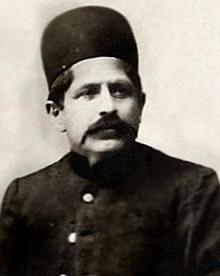An antique 'Khan' Bakthiari, Chahar Mahal & Bakhtiari area, northwestern Persia (Iran), c. 546 x 430 cm.
Around 1890. A red ground with a large polychrome 'Feraghan pattern'. Signed: "Comissioned by His Highness Sardar Ashja Soltan Mohammad Khan Bakhtiar". Bukowskis thanks Hadi Maktabi, PhD, for his help with this information.
Provenance
Soltan Mohammad Khan Mo'in Homayoun Bakhtiari (1842-1924), often referred to as "Sardar Ashja" ("the bravest leader"), was born into a powerful branch of the Bakhtiari tribe where his father, brothers, uncles, and cousins were all very prominent. He served as governor of Isfahan five times, and on other occasions as governor of Arak and deputy chief of the entire Bakhtiari tribe (Il-Begi). He died in 1924 of illness in Paris.
More information
Since the 17th century, the tribe, today homogeneously, called Bakhtiari has taken possession of the Chahar Mahal valley. The area is hence called Chahar Mahal and Bakhtiari. The tribe is organized around the family as the center, the Khanevadeh, sometimes also Vargah (tent). Then these form larger groups that are united by different types of interests regarding terrotories. These feudal factions are led by a Khaner who in turn is led by the Ilkhan (Great Khan). The Kahns surrounded themselves with symbols of wealth where carpets of the highest quality were one of the main means of power to show both strength and status. The auction's Khan-carpet has belonged to Soltan Mohammad Khan Mo'in Homayoun Bakhtiari (1842-1924), often referred to as "Sardar Ashja" (the bravest leader). He was Governor for five terms in Isfahan, and at other times governor of Arak and deputy Khan of the entire Bakhtiari tribe (Il-Begi). The carpet comes from around 1890 when tensions arose both among the Bakhtiari tribe internally and with the Persian central power. This eventually led to the new ruling Pahlavi dynasty coming to abolish the Kahns and their power during the 1930s.
























































